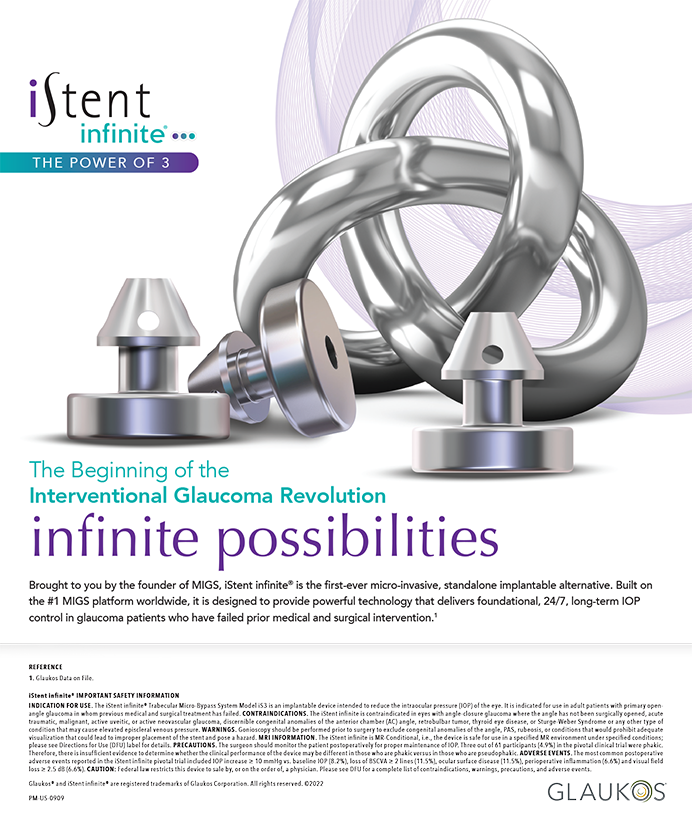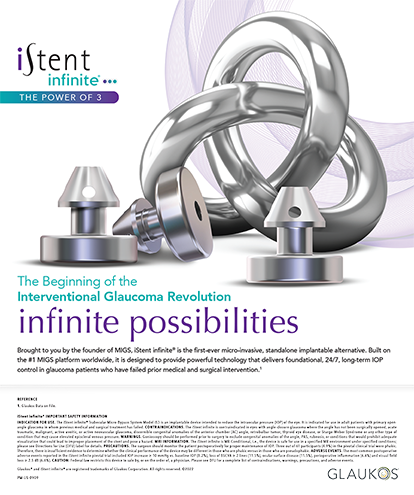Dr. McDonald explains that physicians are learning more about the effect that the alcohol used in the classic LASEK technique has on epithelial cells. “Epithelial cells are so delicate that that touching or manipulating them can cause them to disintegrate, and the use of alcohol can be toxic to these cells,” she says. Researchers are finding that applying alcohol to the corneal surface can increase pain, induce the epithelial cells to release apoptotic cytokines, and increase the inflammatory response. Dr. McDonald believes the epithelial layer can be handled in a healthier manner during the LASEK procedure, and has devised a new technique to accomplish this.
The Latest In LASEK Techniques
Aside from minor variations, there are currently two basic techniques for removing the epithelial layer during the LASEK procedure: the traditional technique using an alcohol solution, developed by Massimo Camellin, MD, of Italy, and Dr. McDonald's new gel-assisted technique. When performing Dr. Camellin's technique, the surgeon removes the stiffened epithelial cells in a continuous sheet, after they have been soaked in a 20% alcohol solution for 20 seconds.
Another variation of Dr. Camellin's technique, called the butterfly technique, was first described by Paolo Vinciguerra, MD, of Italy. Instead of scraping or pushing the epithelial layer off in a continuous sheet with a hinge resembling a LASIK flap, the surgeon cuts up the center of the stiffened epithelial layer, and divides the sheet in the middle, almost like parting curtains on a stage, and the resulting halves resemble the wings of a butterfly. Once the epithelium is out of the way, the surgeon performs the procedure, which is much like PRK, and then repositions the epithelium. (For additional information describing Dr. Vinciguerra's butterfly LASEK technique, please refer to page 51.)
Searching for a Better Way
The main difference between PRK and LASEK performed in the classic manner is that LASEK attempts to save as many epithelial cells as possible. Dr. McDonald explains that unfortunately, many are killed when exposed to the alcohol, which is necessary to stiffen and loosen the sheet of epithelial cells. “In order to preserve these delicate epithelial cells, we wanted to learn how to remove them without using alcohol. Alcohol is toxic to the epithelium and to the keratocytes, and leads to more haze, more regression, as well as an increase in unpredictable outcomes. Therefore, we have developed a technique that does not require alcohol.”
The gel-assisted lasek Technique
At the beginning of the LASEK procedure, the surgeon scores down on the epithelium to make a tiny, linear, 1- to 2-mm epithelial defect, similar to a small scratch in the epithelium. Next, the surgeon applies sodium chloride 5% for 10 seconds over the entire cornea, which stiffens and loosens the epithelial cells without killing them. The surgeon then rinses the solution away. The epithelium is kept moist using GenTeal gel (hydroxymethylcellose 0.3%; CIBA Vision, Duluth, GA). The surgeon then places the microkeratome suction ring onto the limbus, centered over the cornea. While the pressure on the eye is raised, he or she uses a spatula (Mastel Precision Surgical Instruments, Rapid City, SD) (Figures 1 and 2) to slip through the small linear epithelial defect, and mechanically strip off epithelial cells using a “spatulating” technique. The suction ring should never be applied for more than 30 seconds, and not more than twice. Once the surgeon has lifted the epithelium in a continuous sheet, it will be very stretchy, says Dr. McDonald, and can therefore be blown up into a gumdrop-like shape, away from Bowman's layer, using GenTeal gel (used off-label for this indication).
Next, the surgeon performs a version of the butterfly LASEK technique, making an incision down the middle of the epithelial “gumdrop,” and pushing the two halves aside. If one cut is not sufficient to expose Bowman's layer, and if the surgeon is planning a large ablation, he or she must cut the epithelial sheet again into four quadrants, and lay them back over the limbus, out of the way of the ablation. Before ablating, the surgeon should remove all gel with a moist cellulose sponge, being careful not to damage the epithelial sheet. Once the surgeon finishes the ablation, he or she rolls the epithelial layers back into place. The surgeon then places a bandage contact lens over the cornea, and pats the lens gently to burp out any remaining GenTeal gel from under the epithelial sheet.
Raising Expectations
Dr. McDonald suspects that when compared to the classic technique, this alcohol-free method will be better for patients. “This alcohol-free method might prove to be superior because it kills very few, if any, epithelial cells. Often, in the traditional LASEK procedure, alcohol leaks out from the well and kills cells on the conjunctiva and on the rest of the cornea that are not meant to be affected.” Dr. McDonald also surmises that eliminating the use of alcohol will hasten the return of patients' visual acuity and reduce their amount of discomfort during the recovery period. But, she emphasizes, this is all highly theoretical at this time.
A prospective, randomized, masked study comparing traditional alcohol-assisted LASEK with gel-assisted LASEK is underway. Each patient is undergoing alcohol-assisted LASEK in one eye and gel-assisted LASEK in the other eye, without knowing which eye received which technique. Aside from running the usual tests comparing safety and efficacy, Dr. McDonald is performing psychometric testing. The team expects to know soon which method is the safest and most efficacious for patients.
Marguerite B. McDonald, MD, FACS, is Clinical Professor of Ophthalmology at Tulane University. She is Director of the Refractive Surgery Center of the South Eye, Ear, Nose, & Throat Institute of Memorial Medical Center in New Orleans, Louisiana. Dr. McDonald may be reached at (504) 896-1250; margueritemcdmd@aol.com

